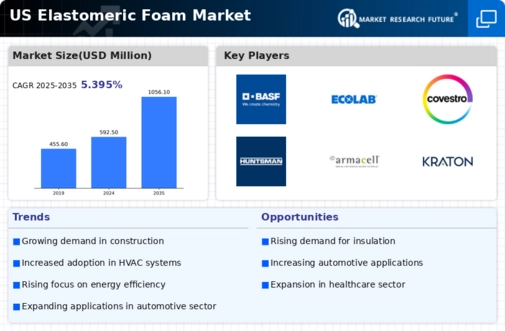The US Elastomeric Foam Market has become increasingly competitive, driven by the rising demand for lightweight, flexible, and insulating materials across various industries, including construction, automotive, and HVAC. As companies innovate and expand their product offerings, the market dynamics shift, influenced by factors such as technological advancements, changing consumer preferences, and environmental regulations. This competition has led to enhanced product development, better price strategies, and improved distribution channels, ensuring that businesses position themselves effectively to cater to the evolving market needs.
A variety of players are active in this space, each leveraging their strengths to differentiate their offerings while continuously striving for market share in this dynamic environment.Sealed Air Corporation has emerged as a formidable player in the US Elastomeric Foam Market, capitalizing on its extensive experience and innovation capabilities. The company has built a robust market presence through its commitment to providing high-quality foam solutions that meet diverse customer requirements. Known for its advanced engineering and production techniques, Sealed Air Corporation excels in offering innovative products that enhance thermal insulation, reduce noise, and provide cushioning.
The company's strengths include a strong distribution network, strategic partnerships, and a focus on sustainability, which resonates well with environmentally-conscious consumers. By continually refining its product portfolio and investing in research and development, Sealed Air Corporation maintains a competitive edge in the elastomeric foam sector within the US.W. R. Grace has also established itself as a key player in the US Elastomeric Foam Market, known for its commitment to quality and innovation. The company specializes in a range of materials that cater to various industrial applications, including insulation and sound-dampening solutions. W. R.
Grace's strengths lie in its advanced manufacturing processes, which enable the production of high-performance elastomeric foam products. The company is recognized for its strategic market presence, bolstered by collaborations and acquisitions that enhance its product offerings and capacity. Key products include advanced insulation systems and tailored foam solutions that meet specific industry standards. W. R. Grace's approach to marketing and customer engagement further solidifies its reputation and increases its market share within the US region, positioning the company as a reliable supplier in this competitive landscape.




















Leave a Comment